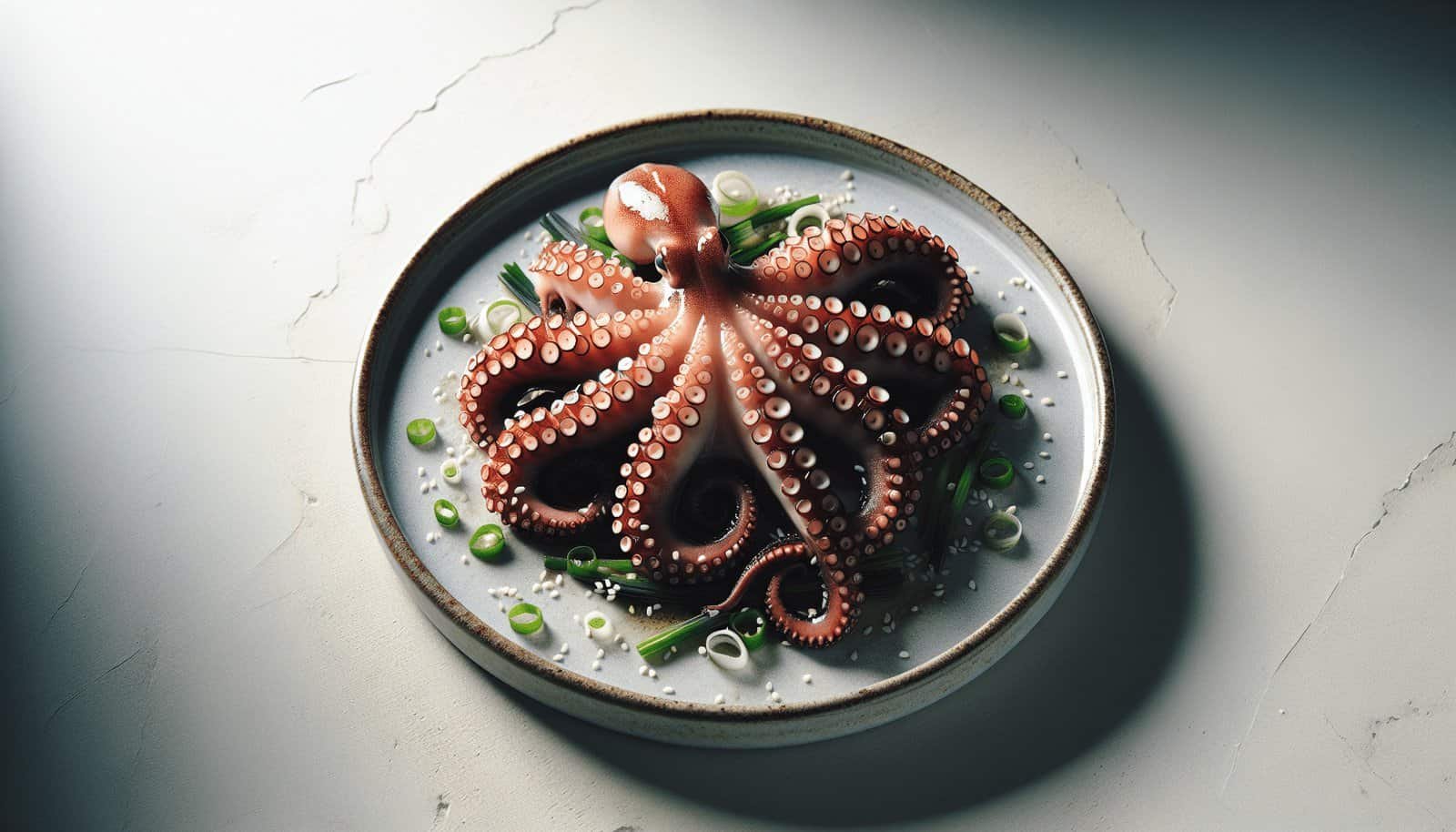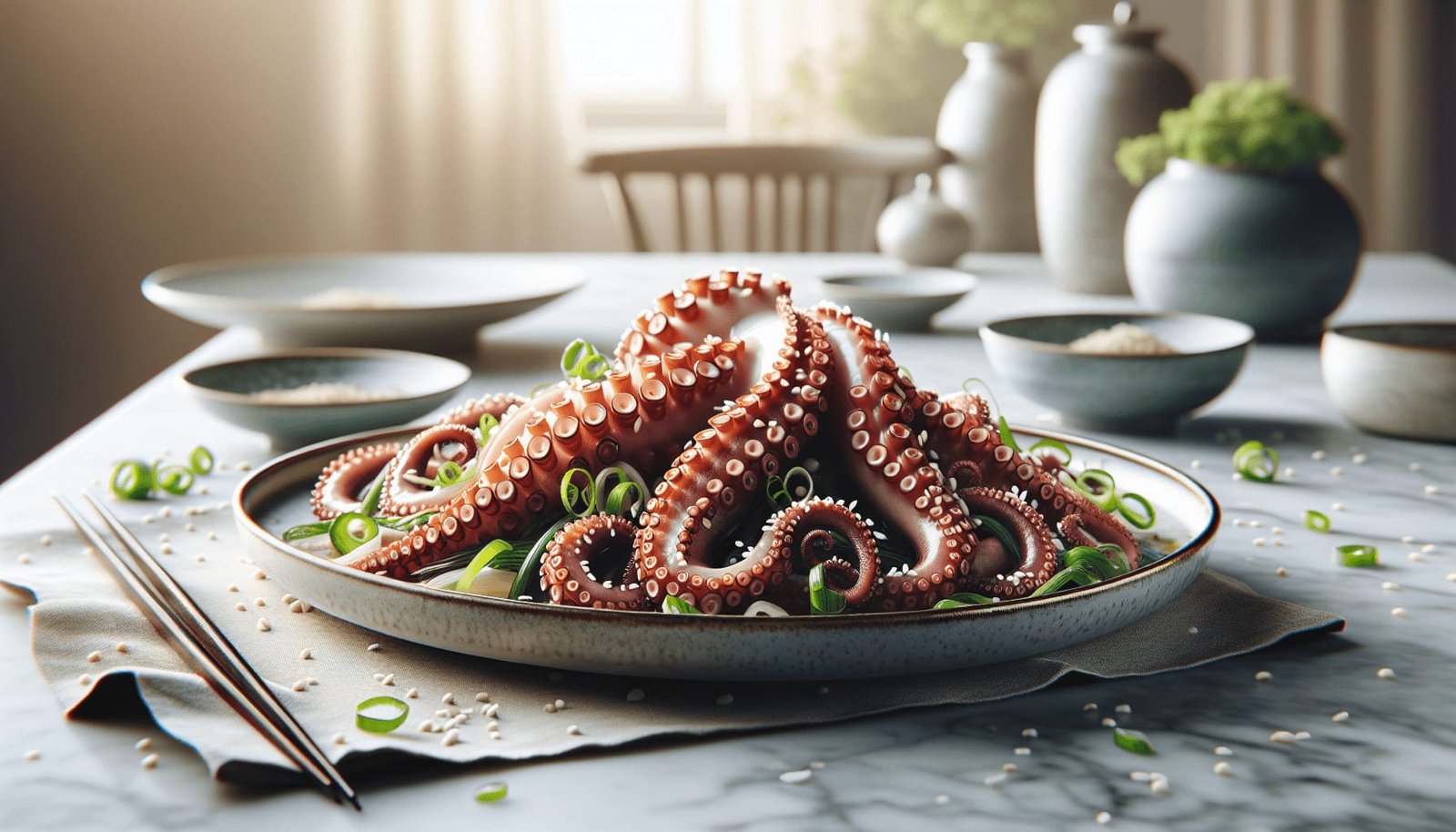Are you ready to embark on an extraordinary culinary adventure? In “How Do You Properly Cook and Enjoy Live Octopus (sannakji) at Home,” you’ll discover the step-by-step process to prepare this mesmerizing Korean delicacy in the comfort of your own kitchen. From selecting the freshest octopus and mastering the art of cleaning it, to the best techniques for safely slicing and serving it, this guide ensures you have all the know-how for an authentic and delicious experience. Dive in, and get ready to impress your taste buds and your guests with this one-of-a-kind dish! Have you ever wondered how to properly cook and enjoy live octopus, known as sannakji, at home? This traditional Korean delicacy, famous for its unique texture and vibrant, fresh flavors, might seem intimidating at first. But, with the right approach and steps, you can transform this fascinating sea creature into an unforgettable culinary experience in your own kitchen.

What is Sannakji?
Sannakji is a Korean dish made from live octopus, usually served with the tentacles still wriggling on the plate. The word “sannakji” literally translates to “live octopus.” The dish is known for its fresh, oceanic flavor and slightly chewy texture, offering a unique experience that adventurous eaters around the world seek out.
History and Cultural Significance
Sannakji stands out as a staple in Korean cuisine, often enjoyed in coastal regions and during special occasions. It’s believed that the freshness and vitality of the octopus bring good health and vitality to those who consume it. Understanding its cultural context enriches your appreciation of this dish.
Selecting the Right Octopus
Choosing the right octopus is the first essential step in preparing sannakji. Freshness is key here, as the quality of the octopus directly affects the meal’s taste and texture.
| Criteria | Description |
|---|---|
| Freshness | The octopus should be alive or freshly caught, showing signs of vitality and health. |
| Size | Small to medium-sized octopi are preferable as they are tenderer and easier to handle. |
| Appearance | Look for a shiny, moist, and firm body with no discoloration or damage. |
Sources for Sourcing Live Octopus
You can find live octopus at local seafood markets or specialty Asian grocery stores. If you’re not near such places, online seafood suppliers often ship fresh octopus directly to your door. Make sure to buy from reputable sources to ensure you get a healthy, live octopus.
Proper Handling and Preparation
Now that you’ve got your octopus, let’s move on to handling and preparing it. Here’s a step-by-step guide to make the process manageable and safe.
Handling Live Octopus
Handling a live octopus may seem daunting, but with a few tips, you can do it safely and confidently.
- Wear Gloves: The octopus’s tentacles are covered in suction cups, which can cling to surfaces—and your skin too.
- Secure Work Area: Make sure your workspace is clean and free from distractions, as the octopus can be quite slippery and active.
- Minimize Stress: Keep the octopus calm by placing it in a bowl of cold, salted water while you prep your tools and ingredients.
Cleaning the Octopus
Cleaning the octopus is an important step to remove any unwanted parts and make it ready for consumption.
Steps for Cleaning:
- Rinse Thoroughly: Hold the octopus under running cold water to wash away any sand or debris.
- Remove Innards: Turn the octopus’s head inside out, much like you would with a sock, and remove the innards carefully.
- Cut the Beak: Locate the beak at the point where all the tentacles meet and cut it out with a sharp knife.
- Remove the Eyes: Make an incision around each eye and gently press them out.
- Final Rinse: Give the octopus one last rinse to ensure it’s clean and ready for preparation.
Preparing Sannakji for Serving
There are various ways to serve sannakji, but some traditional and basic methods ensure you experience its classic flavors.
Basic Preparation Method
The simplest way to prepare sannakji involves cutting the live tentacles into bite-sized pieces.
- Cut Tentacles: Place the octopus on a clean cutting board and use a sharp knife to slice the tentacles into 1-2 inch pieces.
- Season: Lightly season with sesame oil and a sprinkle of sesame seeds for added flavor.
- Plate: Arrange the tentacle pieces on a serving platter. You can add a splash of lemon juice for a hint of acidity if desired.
Extra Flavors and Variations
To elevate your sannakji experience, consider these additional flavors and preparation methods:
- Garlic and Chili: Add minced garlic and fresh chili slices to the basic preparation for a spicy kick.
- Herb Infusion: Mix in chopped fresh herbs like cilantro or mint to introduce a burst of freshness.
- Soy Dip: Create a dipping sauce with soy sauce, vinegar, and minced garlic for a tangy complement.

Accompaniments and Serving Suggestions
Sannakji is often enjoyed with an array of side dishes and condiments that enhance its flavors. Here are some traditional and contemporary ideas.
| Accompaniment | Description |
|---|---|
| Soy Sauce | Adds a salty and umami flavor that complements the clean taste of the octopus. |
| Sesame Oil | Provides a nutty aroma and smooth texture, making the dish more fragrant. |
| Gochugaru | Korean chili flakes add a bit of heat and vibrant color to the dish. |
| Vegetables | Fresh lettuce leaves, sliced cucumbers, and radishes offer a crisp and refreshing balance to the chewy octopus. |
Beverage Pairings
Pairing sannakji with the right beverages can enhance your dining experience.
- Soju: The clear, distilled Korean spirit pairs well with the subtle flavors of sannakji.
- Beer: A light, crisp beer can cleanse the palate between bites.
- Herbal Tea: For a non-alcoholic option, a cool cup of barley tea can be refreshing.
How to Safely Enjoy Sannakji
Eating live octopus requires mindfulness to ensure safety, as the suction cups can pose a choking hazard if not properly handled.
Tips for Safe Consumption
- Chew Thoroughly: The suction cups can stick to your throat if not adequately chewed. Make sure to chew well before swallowing.
- Small Bites: Cut the octopus into manageable, bite-sized pieces to make it easier to handle.
- Use Chopsticks: Using chopsticks gives you better control over each piece, minimizing the risk of choking.
Nutritional Benefits
Sannakji isn’t just a culinary adventure; it also offers several health benefits.
Nutritional Value of Octopus
Octopus is a low-calorie, high-protein food packed with essential nutrients.
| Nutrient | Benefits |
|---|---|
| Protein | Supports muscle growth and repair. |
| Omega-3 Fatty Acids | Promotes heart health and reduces inflammation. |
| Vitamins B6 and B12 | Important for brain health and blood formation. |
| Selenium | Acts as an antioxidant, defending against cell damage. |
| Iron | Essential for oxygen transport in the blood. |
Health Considerations
While octopus is generally safe for most people, those with seafood allergies or dietary restrictions should approach with caution. It’s also low in saturated fats and high in essential minerals, making it a healthy addition to your diet when enjoyed in moderation.
Tips and Tricks for the Perfect Sannakji
Becoming a sannakji pro takes practice, but these tips and tricks can help you get there faster.
Storage Tips
If you can’t consume the octopus immediately after purchase, proper storage is critical.
- Keep Alive: Store the octopus in a container with seawater or salted water in the refrigerator to keep it alive until you’re ready to prepare it.
- Short-term: Refrigerate on ice and cover with a damp cloth. Use within 24 hours for best freshness.
- Long-term: If you need to store it longer, consider freezing. Note that freezing will kill the octopus and slightly change its texture.
Enhancing Texture
The texture of octopus can sometimes be too chewy for some people. Here’s how to manage it:
- Tenderizing: Use a tenderizing mallet to gently pound the tentacles before cutting them for a softer texture.
- Marinating: A short marinade in acidic ingredients like vinegar or lemon juice can also help break down the muscle fibers.
Ethical Considerations
Eating live octopus can raise ethical questions, and it’s important to consider these aspects.
Animal Welfare
Consider the methods used in catching and handling live octopus. Some people may find it more ethical to eat fresh, but not live, octopus to avoid unnecessary suffering.
Sustainable Consumption
Choose octopus that has been sourced sustainably to help preserve marine environments and species populations. Look for certification labels or ask your fishmonger about the sourcing practices.
Conclusion
With this comprehensive guide, you’re now equipped to properly cook and enjoy live octopus (sannakji) at home. From selecting the freshest octopus to mastering the preparation and serving techniques, every step involves careful attention and respect for this unique dish. So, gather your ingredients, don your apron, and embark on this culinary adventure right from your kitchen. Happy cooking!
Frequently Asked Questions (FAQs)
Here are some commonly asked questions to help you further.
Can I safely freeze live octopus?
Yes, you can freeze the octopus, but it will kill the animal and slightly alter its texture. For the freshest taste, it’s better to consume it as soon as possible.
What are some safety concerns regarding eating live octopus?
The primary safety concern is the risk of choking due to the suction cups. Ensuring that the octopus is properly prepared and chewing thoroughly can mitigate these risks.
Can I cook the octopus instead of eating it raw?
Absolutely! While sannakji is traditionally consumed live, cooking the octopus is another delicious option. Boiling, grilling, or stir-frying are excellent ways to enjoy cooked octopus.
How do I know if the octopus is fresh?
Fresh octopus will be moving if it’s alive and will have a firm, moist body with a shiny exterior. There should be no noticeable odor apart from a fresh, oceanic scent.
Are there any health benefits to eating live octopus?
Yes, octopus is rich in protein, omega-3 fatty acids, vitamins, and minerals, making it a nutritious addition to your diet. Just ensure it fits within your dietary preferences and restrictions.
Enjoy your culinary journey with sannakji, and may it bring you a deeper appreciation for the flavors and traditions of Korean cuisine.
